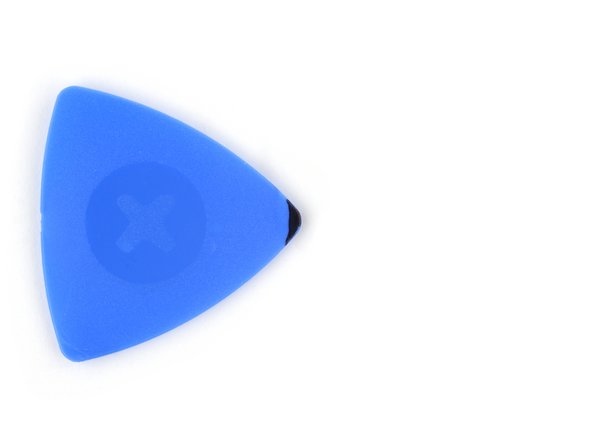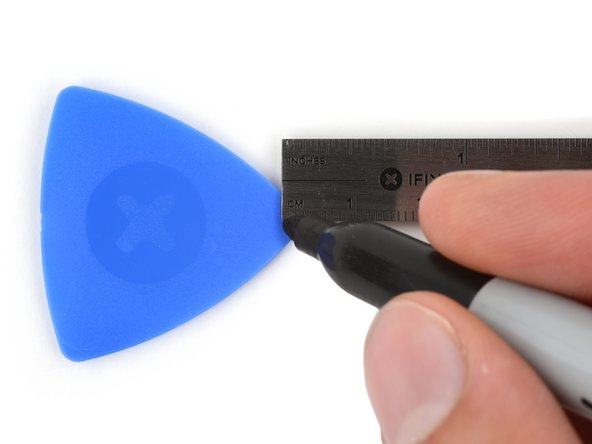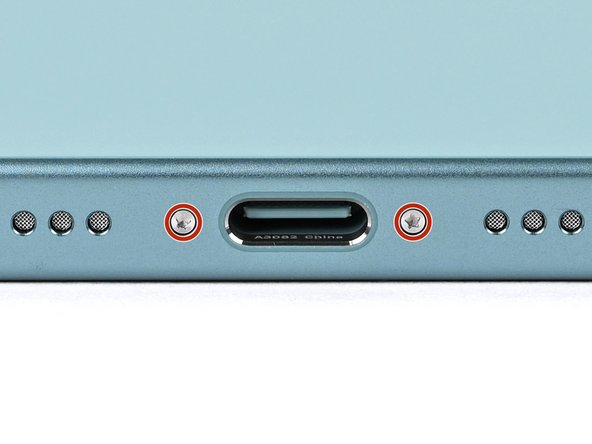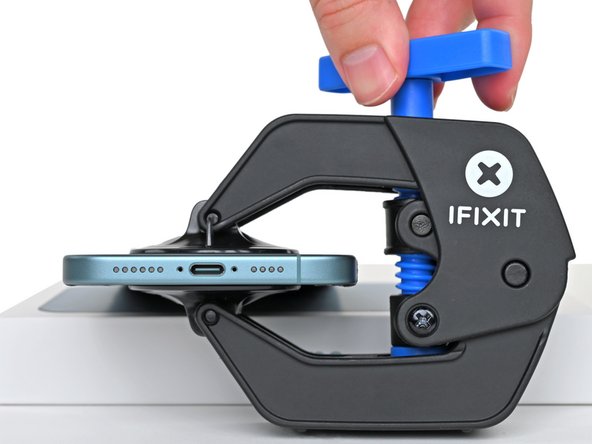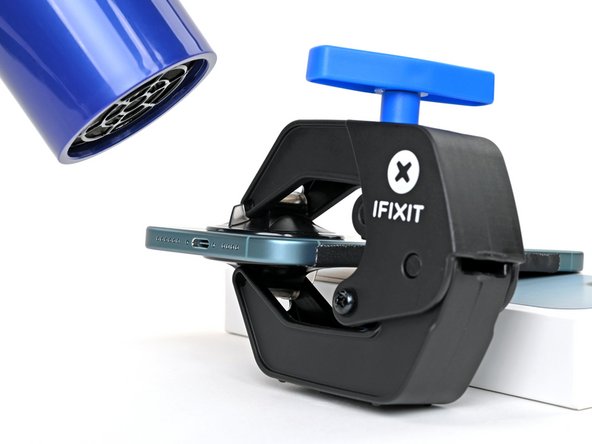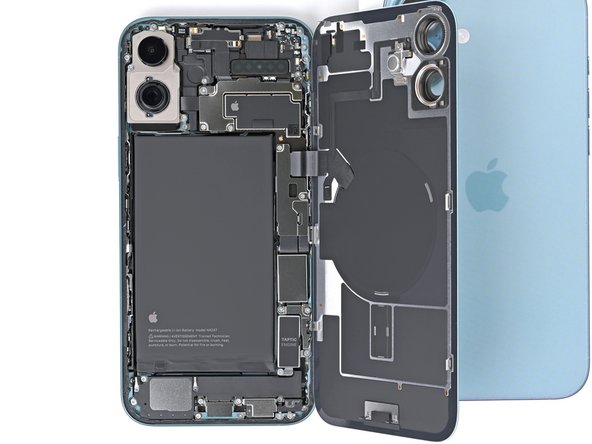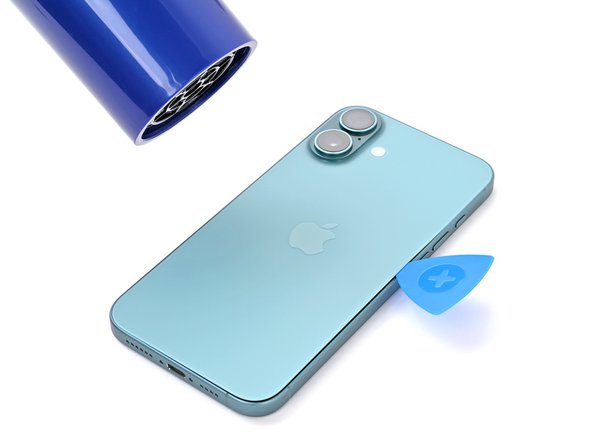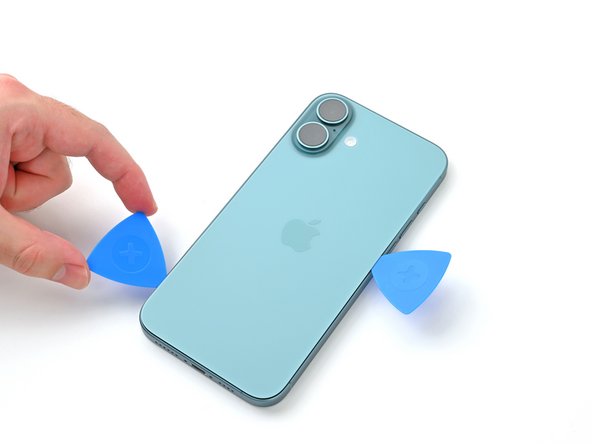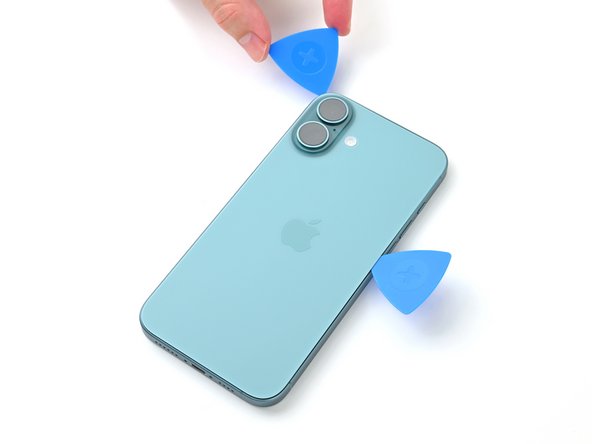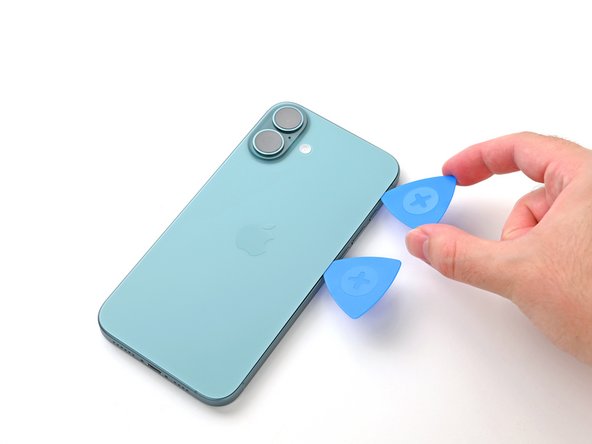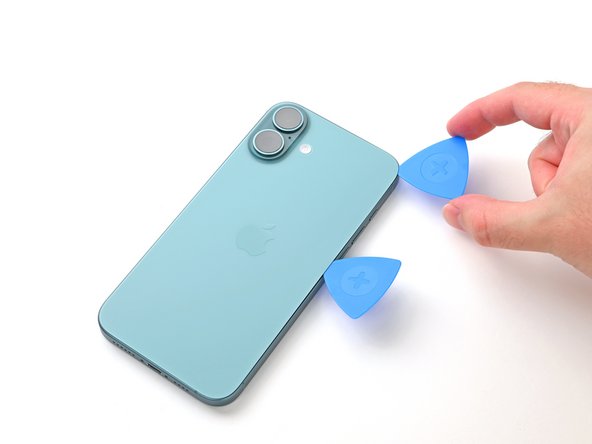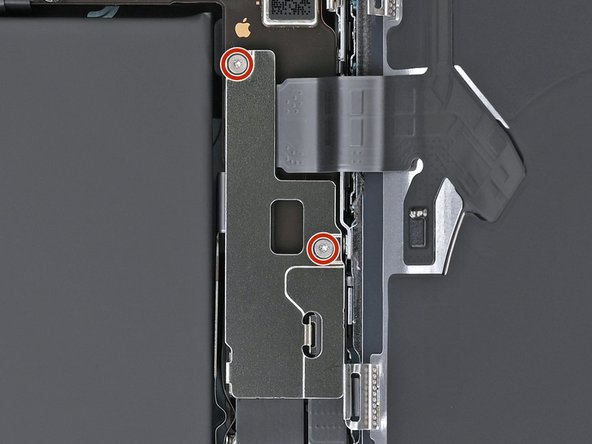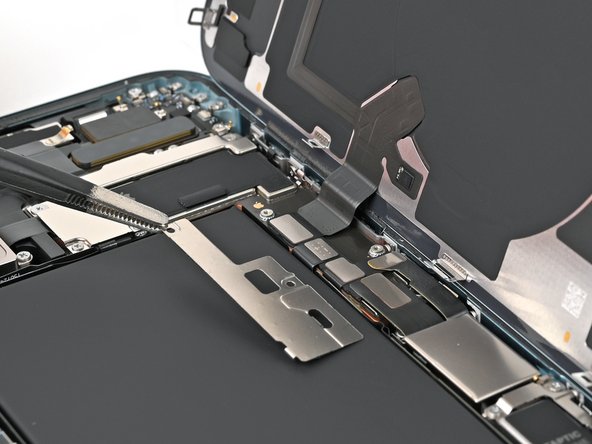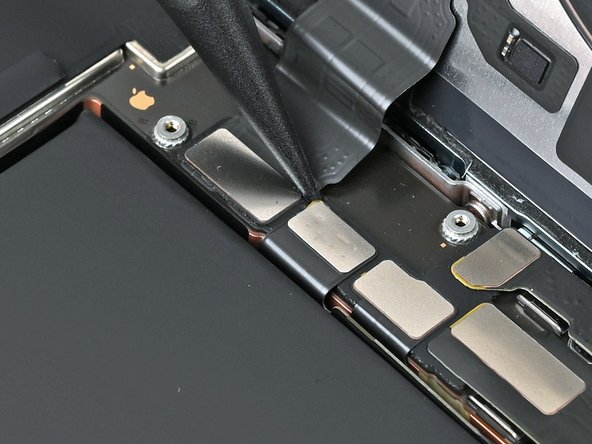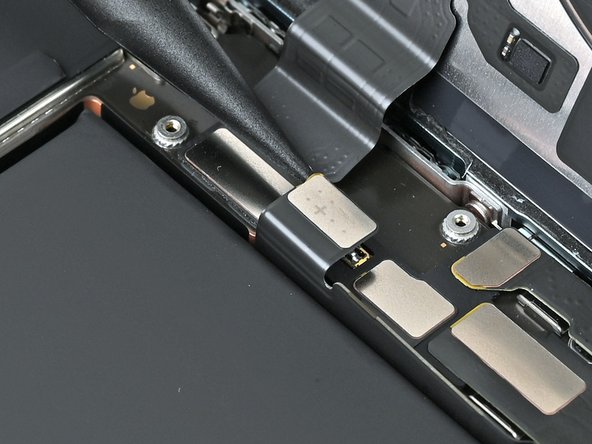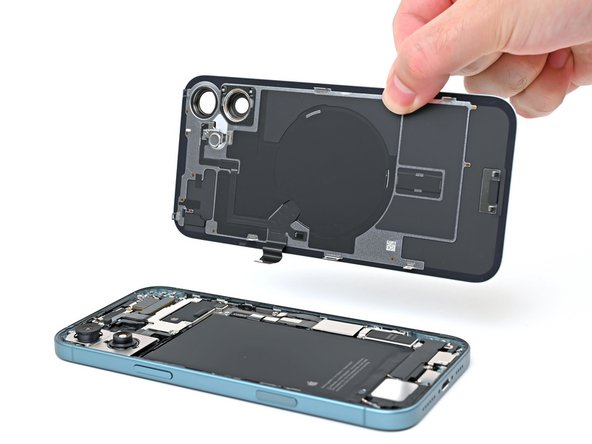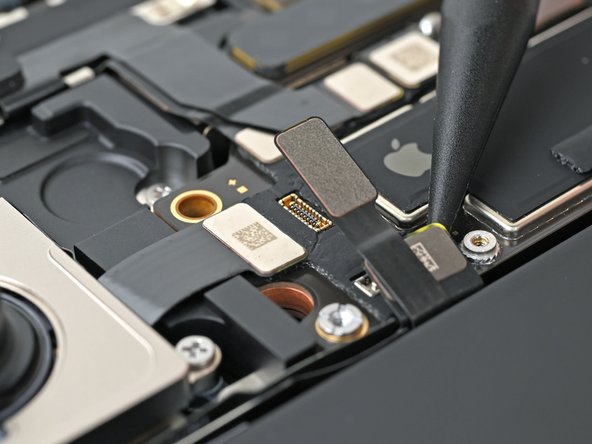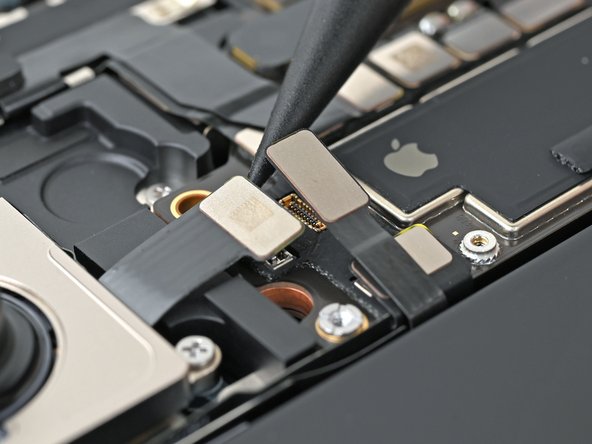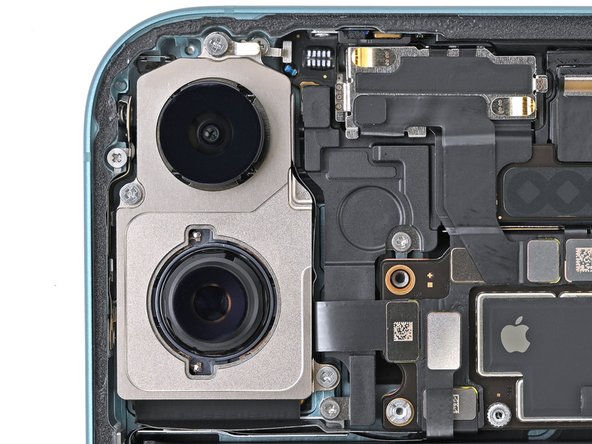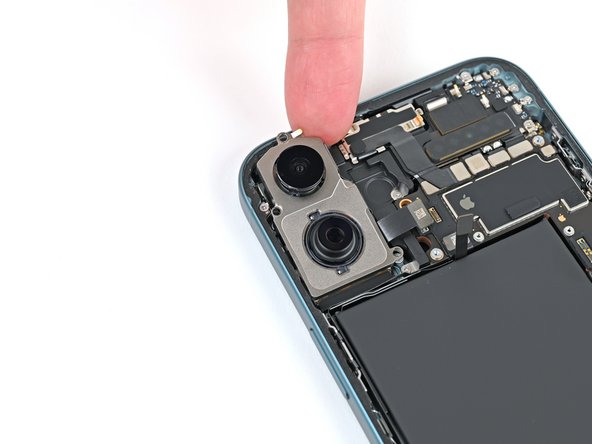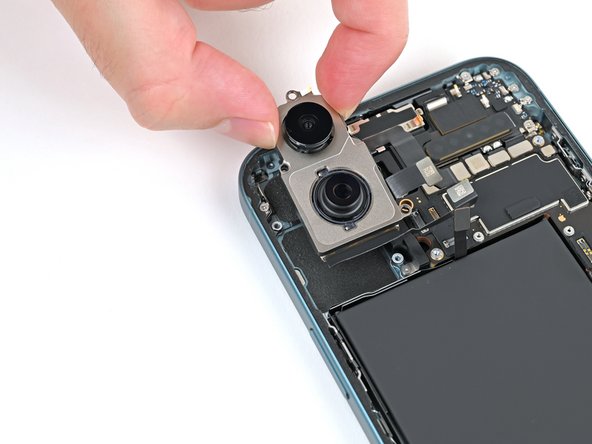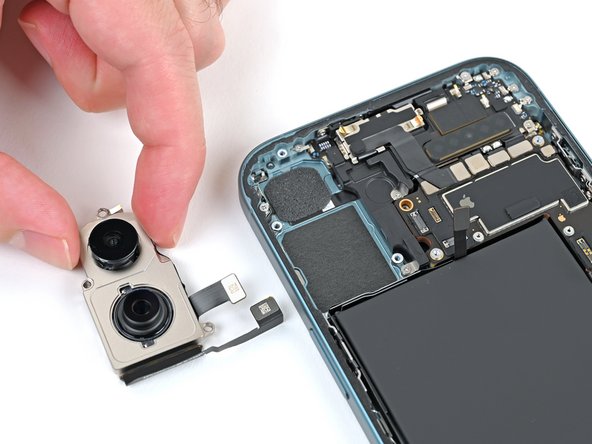Step-by-Step iPhone 16 Plus Rear Cameras Replacement Guide
Duration: 45 minutes
Steps: 32 Steps
Wrap up your repair adventure with Apple’s Repair Assistant!
Ready to swap out the rear cameras in your iPhone 16 Plus? If your snapshots and videos are looking fuzzy, noisy, or your cameras struggle to focus, it might be time for a replacement. For selfie camera issues, check out our other guide. This assembly packs the wide and ultrawide rear cameras, coming as a single unit uniquely paired with your logic board. You’ll need to finish the repair with Apple’s Repair Assistant to keep things smooth. Don’t forget you’ll also need replacement back glass adhesive to wrap this repair up. If you need help, you can always schedule a repair.
Step 1
Let your phone’s battery dip below 25%—a fully charged lithium-ion battery can be a bit of a drama queen when it comes to safety!
– First things first, let’s disconnect any cables from your phone. We want it nice and free!
– Now, press and hold the power button along with either of the volume buttons. Then, slide to power off your phone. Easy peasy, right?
Step 2
Ensure there’s a smooth spot near the bottom edge that’s spacious enough for a suction cup to grab onto.
– If your screen or back glass is looking a bit worse for wear, grab some packing tape and lay down overlapping strips over the glass. This will keep you safe and make taking everything apart a whole lot easier!
Tools Used
Step 3
Hey there! Just a quick heads up: if you push that opening pick in too deep, you might accidentally harm your device. So, let’s take a sec to mark your pick and keep everything safe!
Feeling adventurous? You can also add some flair by marking the other corners of the pick with different measurements.
Or, if you’re in the mood for a little DIY creativity, try taping a coin to a pick about 3mm from the tip. It’s a handy trick!
– Take your trusty opening pick and measure out 3 mm from the tip. Give it a little mark with a permanent marker so you know where to start your adventure.
Step 4
– Grab your trusty P2 pentalobe driver and pop out those two 7.7 mm-long screws flanking the USB-C port like a pro. If you need help, you can always schedule a repair
Step 5
Get ready for the next five steps where we introduce the Anti-Clamp, your new best friend for opening up your device with ease. If you’re not using the Anti-Clamp, no worries! Just skip down four steps for a different approach.
The Anti-Clamp works its magic by creating suction on both the screen and the back glass. If you’re only looking to pop open the back glass, just make sure to tape down the screen securely.
For the full scoop on how to master the Anti-Clamp, be sure to check out this guide.
Remember, the tape should only hold the screen in place, leaving the back glass free to open up.
– Slice up two strips of tape, stick them along the lengthy edges of your phone, and wrap them over the screen to keep everything snug as a bug.
Step 6
If your phone’s too slick for the Anti-Clamp, use some tape to make it grippier. Need help? You can always schedule a repair
– Give the Anti-Clamp’s blue handle a gentle tug backward to set those arms free!
– With the back glass facing up, position the arms over the right edge of your phone, placing one suction cup on the back glass and the other on the screen. Aim to center those cups near the bottom edge for optimal grip.
– Support your phone so it sits nice and level between the Anti-Clamp’s arms—a small box works wonders as a stabilizer.
– Now, give those cups a squeeze to create a solid suction. You’ve got this!
Step 7
If you’re out of tape, try warming up the suction cups to get a better grip.
– Give that blue handle a tug to lock those arms in place.
– Spin the handle a full 360 degrees, or until those cups start to stretch.
– While the cups stretch, make sure they’re lined up vertically. If they keep slipping, remove the Anti-Clamp and throw on some tape to keep them in place.
Step 8
Watch out for the heat! Keeping the phone too hot can lead to battery troubles. Stay cool and keep it safe!
Feeling a bit crafty? Grab a hair dryer or heat gun and warm up the bottom edge of the back glass until it’s toasty! Just enough to give it a nice hug from the heat.
If you don’t see a gap popping up after a minute, no worries! Just add a bit more warmth and twist that handle a quarter turn. Let the Anti-Clamp take the reins for a bit, and keep repeating until you get the results you want.
– Give your iOpener a warm-up and then let it chill on the bottom edge of the back glass for about two minutes.
– Take a breather for up to a minute while the adhesive loosens up and a little gap appears between the back glass and the frame.
Tools Used
Step 9
– Gently slide the tip of your opening pick into the crack and let the magic begin.
– With a little tug on those pull tabs, bid farewell to the Anti-Clamp as it gracefully exits.
– Feel free to skip ahead past the next two steps; you’re doing great!
Step 10
Keep cool! Don’t heat the phone more than this, or the battery could get damaged. If you need help, you can always schedule a repair.
Alternatively, grab a hair dryer or a heat gun and warm up that bottom edge of the back glass until it’s toasty enough to handle.
– Give your trusty iOpener a little love by heating it up and applying it to the bottom edge of the back glass for a solid two minutes. You got this!
Tools Used
Step 11
– Grab a suction handle and stick it right on the bottom edge of the back glass, just above the USB-C port.
– Give that handle a solid, steady pull to create a little gap between the back glass and the frame. You’ve got this!
– Now, slide the tip of an opening pick into that gap you just made.
Tools Used
Step 12
While slicing through the adhesive to remove the back glass in the next steps, keep an eye out for these areas!
– Watch out for the delicate cable connecting the back glass to the phone, right by the volume up button. Steer clear with your pick to avoid slicing the cable.
– There are several spring contacts along the phone’s edge. Be extra cautious and don’t insert your pick deeper than recommended in each step to avoid bending these contacts.
Step 13
Avoid going more than 5mm deep with your pick on the bottom edge, so you don’t accidentally mess up those spring contacts. If you need help, you can always schedule a repair.
– Gently glide your pick back and forth along the bottom edge to break free the adhesive.
– Keep your pick snugly in the bottom right corner to stop that adhesive from playing hard to get.
Step 14
Grab your hair dryer or heat gun and warm up the back glass until it feels hot to the touch. If you need help, you can always schedule a repair.
– Heat up that iOpener and give some love to the right edge of the back glass for a solid two minutes!
Tools Used
Step 15
Keep your pick’s depth in check—no more than 5 mm along the right edge, or you might just tickle the spring contacts and ribbon cable. We want them to stay happy!
Steer clear of slicing near the volume buttons; we wouldn’t want you to accidentally bump into the wireless charging or flash cable. Let’s keep everything in one piece!
– Glide your pick around the bottom right corner and move it halfway up the right edge, or until you feel a solid stop at a clip holding the back glass.
– Keep this pick in place to stop the adhesive from re-sealing.
Step 16
Using a hair dryer or heat gun? Warm it up until it’s hot to the touch. If you need help, you can always schedule a repair
– Heat up that iOpener and give the left edge of the back glass a cozy two-minute hug!
Tools Used
Step 17
Keep your pick shy of going more than 5 mm deep along the left edge; we wouldn’t want you to accidentally poke the spring contact. You’re doing great!
As you move along, you’ll hear and feel those little metal clips giving way. It’s like a tiny victory dance!
– Pop in a second opening pick at the bottom edge—let’s get this party started!
– Gently glide that pick around the bottom left corner and along the left edge of the screen to break free the adhesive and release those sneaky metal clips.
– Keep this pick snugly in place at the top left corner to keep the adhesive from getting all clingy again.
Step 18
Grab your trusty hair dryer or heat gun and give it a little warm-up until it’s nice and toasty. Just make sure it’s hot enough to feel it, but not too hot to handle!
– Heat up your iOpener and place it on the top edge of the back glass, angled to cover the volume buttons too. Let it sit for a couple of minutes. If you need help, you can always schedule a repair.
Tools Used
Step 19
Don’t go deeper than 3mm with your pick along the top edge, or you might mess up the spring contacts. If you need help, you can always schedule a repair
Listen up! You should hear and feel those top two clips popping free with a satisfying click.
– Gently glide your opening pick along the top edge and around the top right corner towards the volume up button to break that adhesive apart.
Step 20
Hold up! Don’t yank off the back glass just yet—it’s still clinging on with a delicate ribbon cable. Stick with us for the next steps to remove it safely.
If the back glass isn’t popping open like it should, no need to muscle it—just cruise around the edges with your pick and see if there are any sneaky bits of adhesive or stubborn clips you might have missed.
You might want to give the back glass a gentle lift before swinging it open to help those clips let go completely.
– Carefully swing open the back glass toward the volume buttons with a gentle touch.
– Support the back glass with a clean, sturdy object, like a small box, to keep the cable safe and sound.
– Now, it’s time to remove those opening picks!
Step 21
– Grab your trusty tri-point Y000 driver and let’s get to work! Carefully unscrew those two 1.3mm-long screws that are holding down the middle connector cover. You’ve got this!
Step 22
Handle with care—don’t ding or poke the battery at this stage!
– Grab some blunt-nose tweezers or use your fingers to gently slide the cover towards the left edge of your phone. Give a little nudge to pop that hook free from its cozy spot on the logic board.
– Now, go ahead and take off the cover. You’re doing great!
– When it’s time to put things back together, make sure those hooks are lined up with their slots on the logic board. Then, just press the cover down and slide it towards the right edge to snap those hooks back in place. Easy peasy!
Step 23
– Grab your spudger and gently nudge up that battery press connector to disconnect it—easy does it!
– When putting things back together, make sure to line up the connector just right over its socket. Use your fingertip or the flat end of the spudger to press down on one side, then the other, until you hear that satisfying click. No need to force it! If it’s being stubborn, just adjust it a bit and give it another go. You’ve got this!
Tools Used
Step 24
– Grab your trusty spudger and gently nudge up the wireless charging coil press connector to disconnect it. You’ve got this!
Tools Used
Step 25
– Gently lift the back glass off the frame and set it aside.
– Now, before we seal everything up:
– This is a great moment to give your repair a quick test drive! Reconnect the battery and back glass (but hold off on the adhesive for now), power on your device, and check that it’s working like a champ. Once you’ve confirmed it’s all good, power it down, disconnect the battery, and let’s get back to reassembly.
– Follow this guide to reapply adhesive and put that back glass back in place.
Step 26
– Let’s kick things off by unscrewing the four screws that hold the upper connector cover in place:
– Grab your trusty Phillips screwdriver and remove the two 1.4 mm-long screws.
– Next up, take out the one 3.5 mm-long Phillips screw.
– And finally, don’t forget to unscrew the one 1.0 mm-long tri-point Y000 screw.
Step 27
– Grab your trusty tweezers or your fingers, and gently lift off that upper connector cover. If you need help, you can always schedule a repair
Step 28
– Gently pry the connector for the power/Camera Control button press using the tip of your trusty spudger. You’ve got this!
Tools Used
Step 29
– Gently unplug the two rear camera press connectors, which are nestled underneath and a bit to the left of the power/Camera Control button connector. You’ve got this!
Step 30
– Grab your trusty Phillips screwdriver and let’s tackle those rear camera screws! You’ll need to remove three of them:
– One screw that’s 3.2 mm long
– One screw that’s 4.7 mm long
– And one screw that’s 2.4 mm long
Step 31
– Gently use a spudger or your clean fingertip to lift the top edge of the rear cameras until you can easily grab them with your fingers. Just a little nudge, and they’ll be ready to come out!
Tools Used
Step 32
– Gently lift the cameras straight up, then slide them towards the top of the phone to remove them.
– When putting things back together, make sure the camera cables snugly fit in the channel above the battery.





